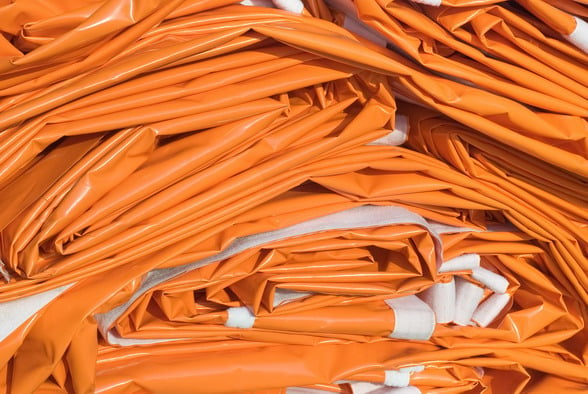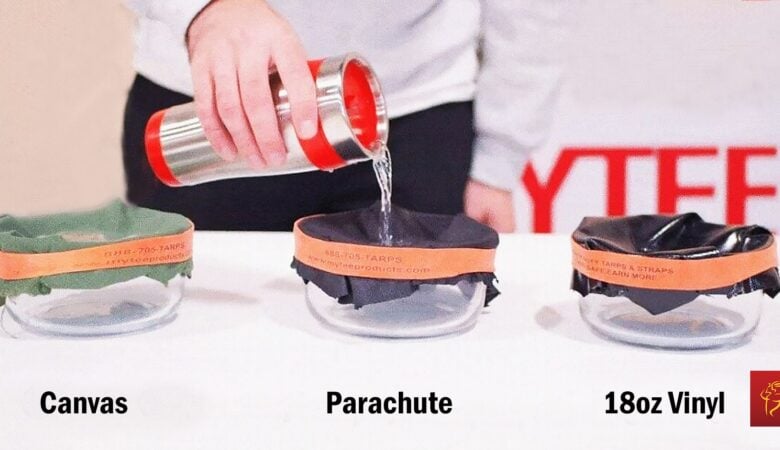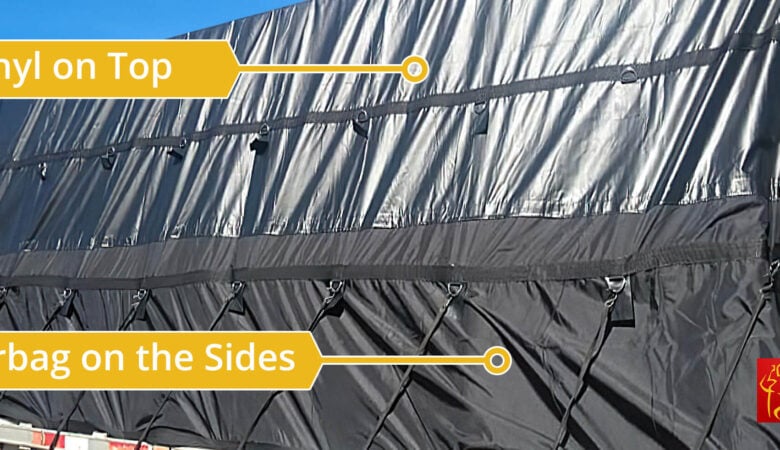When you take a look at any of the tarps we stock, you will notice double-stitched seams and heavy-duty box stitching. An average driver will assume these stitches are for added strength, which to an extent is true, however few are familiar with the physics behind it. One should be careful when purchasing truck tarps, be it lumber, steel or coil tarps that haven’t been manufactured using these kind of stitches.
A truck driver needs tarps to protect cargo from the weather and road debris. However, he/she also requires durable tarps that withstand the wear and tear of daily driving for as long as can be. That is why we recommend spending a little more on a high-quality tarp that offers years of reliable service. Opting for a cheaper alternative could end up costing more in the long run as the tarps might need to be replaced more often.

Spreading the Load Evenly
The idea behind double stitched seams is one of spreading the load across a larger piece of fabric for added strength. By ‘spreading the load’ we mean taking the stress created by pressure (in this case, the pressure generated by both the cargo and the straps used to secure the tarp) and spreading it across the entire seam rather than just concentrating it at the point of a D-ring or grommet.
The laws of physics dictate that the immediate surface area around a pressure point carries the most amount of stress at any given time. Nevertheless, threads running through the fabric of a tarp take some of that stress and distribute the energy across a larger area. It stands to reason that greater stress distribution is achieved by using more thread. That is precisely the point of double stitched seams.
The double stitched seam increases the amount of thread and fabric used to absorb the energy placed on high stress points. Instead of one small piece of fabric and a grommet carrying all the energy of a tie down strap, the energy is dispersed and the overall stress reduced.
The Box Stitch
The box stitch is used to secure D-rings based on the same principle. The only difference here is that the load is not being spread across a greater amount of the tarp surface. Rather, it is being evenly distributed within the webbing that holds a D-ring in place. If you are not sure what we are talking about, look at one of your lumber tarps next time you are tying one down.
A D-ring is held in place by a piece of heavy-duty nylon webbing. If that webbing were stitched in place around the outside edges only, all of the stress put on the D-ring would be absorbed by the edge seam and the small amount of fabric it is attached to. Box stitching distributes the stress across the entire piece of webbing to hold it more firmly in place. Having said that, using the box pattern is important.
A box stitch essentially divides the webbing into smaller pieces that each carries its portion of the load. Even if one part fails, there are up to a dozen others capable of absorbing the energy. A properly stitched webbing is one that could last almost forever under the right conditions.
As you can see, designing and manufacturing lumber, steel and coil tarps requires more than just cutting a piece of nylon to size and putting a nice, cosmetic stitch in place. Tarp designers put a lot of work into the physics of the matter, making sure that stress does not pull a tarp apart, literally at the seams. A well-designed tarp is one that provides cargo protection and stands up to the stresses of flatbed trucking.










